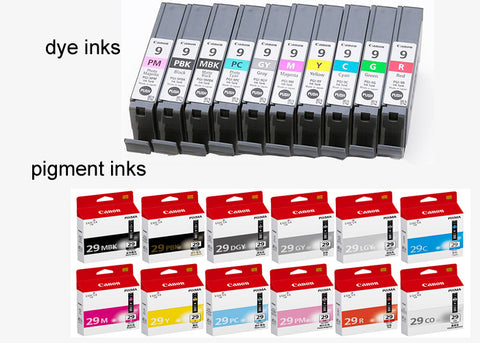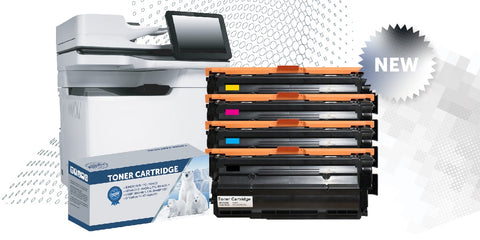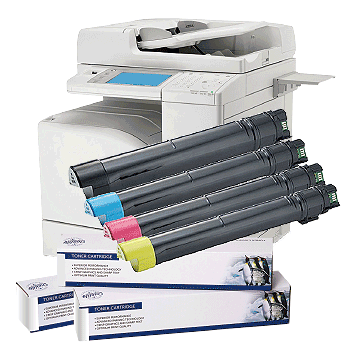DYE AND PIGMENT INKS ARE DIFFERENT. HOW?

Dye Inks offer more colour vibrancy, pigment inks offer longetivity, but which is the one for you?
For most users of ink printers, this is not a concern, as the printer they have will either use the dye constituted ink, or the pigment. And for most home users, the difference between the two types of inks need not be an issue.
So what? Well for instance, if you use say an Epson Stylus Pro 9600, then you can choose to use pigment ink cartridges, or dye ink cartridges. Confused? Following is an explanation of the strengths of either type of ink:
A) Dye Ink
This type of ink is normally water soluble. Because of this they do take longer to dry than pigment inks, and are more susceptible to smearing from any residue moisture (a drop of coffee spilt for example). They are also more susceptible to fading from direct strong light as they are thinner on the page than pigment inks, although this is not as severe a problem as it was in the past owing to improvements in chemical solution resistance techniques. So this should not be seen as a problem for normal everyday usage.
But on the positive side, they have greater colour vibrancy, meaning the dye's colours are more pronounced (brighter) than with pigment inks. Consequently they are the preferred ink for colour photographs or other pictures, as long as they are not subject to sunlight for a period of time.
And they are cheaper!
B) Pigment Ink
Pigment ink is comprised of a colourant powder where the agents used do not dissolve completely into the liquid they are mixed with, leaving a more indelible foot print on the surface fibres of the material it is printed to, making it more difficult to remove.
Print Quality
As mentioned earlier, dye colours are more vibrant than pigment colours, with dye based inks also tending to be preferred for text printing, as pigment inks are a shade lighter than dye inks.
Pigment inks will give you a better result on transparencies or other smooth surfaces, and because of the pigment inks longevity, are preferred by professional businesses such as law firms and accounting practices, who do not have much need for colour, but for printed documents often stored over time. In this regard, mono (no colour) printers, such as the Canon BJC2000SP using the BC 20 OEM cartridge will usually run on pigment ink
But the printer manufacturers will normally determine whether their machines will use ink or pigment inks, and by investigating the reviews on printers prior to purchasing one, you can determine what your usage is most suitable for.


















1 Comment
very informative differentiate between pigment and dye ink.Thanks for sharing
Colorific ink
Posted by Adam lewis on June 16, 2014